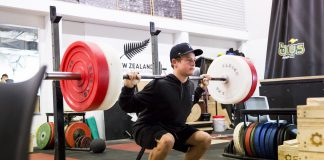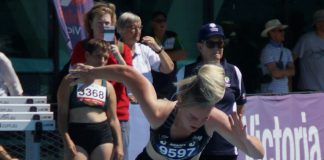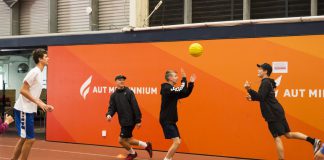I’d like you to do something for me.
Take a jump to the left, and then a step to the right, put your hands on your hips, and bring your knees in tight.
Now, do the pelvic thrust!
(repeat five times)
While you’re enjoying the Time Warp, focus your attention on the way your pelvis moves.
Can you feel its full range of movement, from sticking out like a duck’s bum at one extreme to tucking right under at the other?
The end ranges of pelvic movement are called the “elastic zones”, and they’re where the internal resistance is at its highest (Figure 1).

In full extension, the facet joints (i.e., the joints in your spine that make your back flexible and enable you to bend and twist) take more strain. In full flexion, the ligaments do.
When an athlete has poor posture and competes in sports that demand more pelvic end-range movement, their risk of lower back pain and injury increases significantly.
Take rowing, cycling and fast bowling, for instance.
To reduce their risk of getting hurt, an athlete needs to a) learn more efficient lumbar postures, especially at end-range, and b) spend less time at end-range.
Becoming a skilled mover
Developing more efficient postures is about becoming a skilled mover.
To help our athletes achieve it, we can either take a rigid approach, where we not only set the movement problem, but closely direct the solution. For instance, asking athletes to perform a squat in the exactly the same way over and over again (Figure 2a).
Or we can take a flexible approach, where we design the right environment and allow our athletes to solve the movement problem on their own via exploration (Figure 2b).

Now here’s the thing.
From what we know, the rigid approach helps athletes solve the problem faster, indicating to us that they have learnt the skill.
However, while the practice looks pretty and works in the short-term, the movement skill doesn’t necessarily stick long-term or transfer well to sports performance.
Why? Because no situation, challenge or activity in sport is ever quite the same. They are constantly changing, influenced by the demands of the task at hand and the environment, and therefore, requiring a different movement solution.
So, to become a skilled mover and reduce the risk of pain and injury, a wide array of movement experiences discovered across the range is better.





































